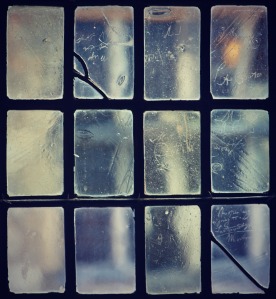The earliest (medieval) glass was made using a flux obtained from the ash of woodland plants (especially bracken). Late in the 16th century, French glassmakers came to England and their glass has a higher calcium content which probably reflects the use of a flux made from tree ash.
From the end of the 17th century window glassmakers began to use seaweed ash as their flux and we see this in the strontium content of the glass. In the 1830s the window glass was revolutionised by the introduction of a pure sodium carbonate flux which was made on an industrial scale.
Further changes in the chemical composition of window glass are mostly related to the increased mechanisation of the window glass industry.
Read the full blog post Historic window glass: the use of chemical analysis to date manufacture

Comments